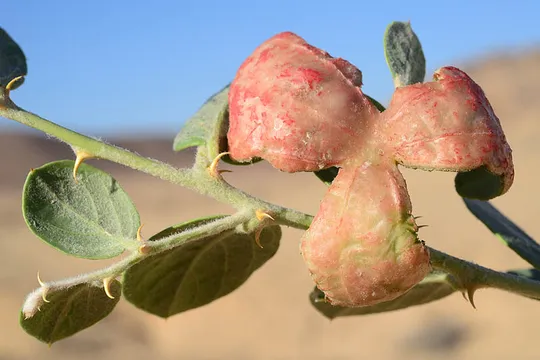Leafless Caper
Capparis decidua
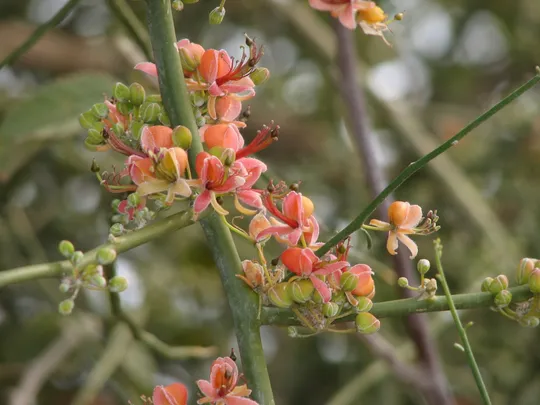
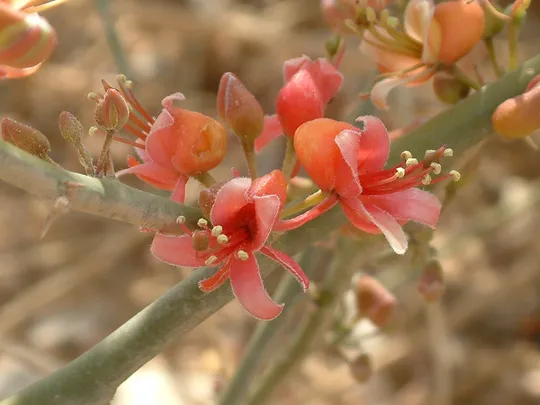
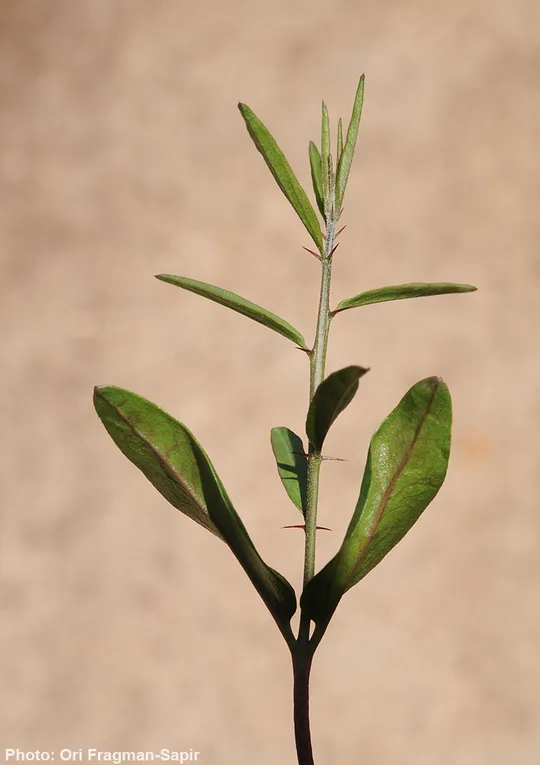
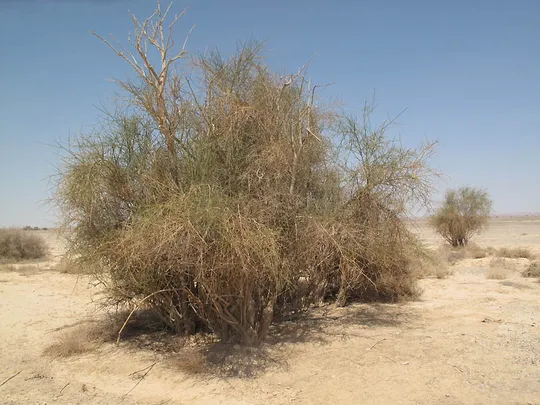
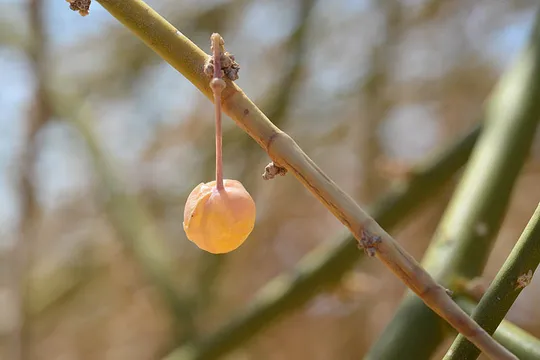
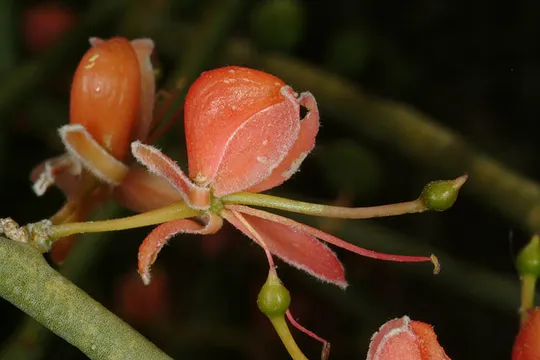
Capparis decidua is extinct and
does not grow wild in Israel today. It was collected in the 1920-50’s in Wadi Hayun
in the Arava, and in the Dead Sea area. Alexander Eig collected the shrub on
the slopes of En Gedi in 1923-26; Tuvia Kushnir notes it from the En Anava
spring in Wadi Tse’elim in 1943 and Jacob Lorch collected it in 1956 in Wadi
Hayun, near a makeshift airfield. All our attempts to locate it again in the
Judean desert canyons were unsuccessful. Today, a single population remains in
Klirohi on the Jordanian shore of the Dead Sea. Michael Blecher successfully
propagated C. decidua
from seeds and reintroduced it to En
Gedi. Nursery plants grown from seeds brought from Klirohi were planted in gardens
in the area.
Abandoned agricultural terraces and margins of cultivated
plots in oases in the Dead Sea area. In Egypt and in Arabia C. decidua
grows in hot wadis and on sandy alluvial fans that have moist horizons for some
parts of the year. In the arid East African and Indian savannas, where most of
its range is located, C. decidua is a prominent
shrub on a sienna-sand substrate with a 150-300 mm annual precipitation regime
that is concentrated in two seasons.
The genus Capparis consists of
about 250 species, the vast majority found in warm tropical regions. Four
species grow in Israel: C.
zoharyi, C. sicula
(C.ovata), C. aegyptia and C. cartilaginea. This is a genus characteristic
of subtropical regions in the Old World and a single species grows in the North
American deserts. Zohary (1973) includes the genus among the ancient tropical
genera that grow in the deserts of the Old and New World (e.g. Prosopis,
Ziziphus, Acacia, Senna, Caesalpinia, Bauhinia, Indigofera and Tephrosia),
and thus are an indication of the common ancestry of the world's deserts. Most
of the Capparis species are shrubs or low climbing trees with entire leaves and
stipules, which become curved thorns in some of the species.
Zohary (1960) believed that C. decidua is
an ancient Sudano-Decanian species, derived from the arid
tropical flora that dominated the region at the end of the Tertiary period. The
fruit and flower structure of C. decidua differs
greatly from other Capparis species in our region; its red flowers
suggest it is adapted to pollination by characteristic tropical birds.
Capparis decidua is extinct in Israel
in two regions where it grew in the past. Prior to its extinction, it was
extremely rare as well and only a few specimens were found. It is found in the
arid Sahel in Africa and in the deserts of India and is not globally endangered.
Capparis decidua should be reintroduced
to gardens in the Dead Sea and Arava oases, as has already been done in En Gedi.
Capparis decidua is a Sudano-Decanian shrub that grows from northwest Africa, through
Senegal and the Sahel region to Somalia and the Horn of Africa, and continues
through southern Arabia, southern Iran and Afghanistan to the Thar Desert in
Rajasthan, India. In the Red Sea region, it turns northward along the coast of
Eritrea, Arabia, Sudan and Egypt, and reaches Eastern Sinai and the Dead Sea shore
in Jordan. In Jordan, it grows only in Klirohi, where it is quite common and it
has disappeared from the Safi Oasis and from the openings of the Moab and Edom
canyons.
Capparis decidua should be reintroduced
to gardens in the Dead Sea and Arava oases, as has already been done in En Gedi.
שמידע א., וכהן, ע. 1988. צלף רותמי, במדור-צמחים נדירים בישראל. "טבע וארץ", ל',(11-12): 17-18.
Zohary M. 1960. The species of Capparis in the Mediterrenean and the Near Eastern countries. Bul.Res.Counc.of Istael, vol8D, 49-64.
Current Occupancy Map
| 1000 squre meter pixel | 5000 squre meter pixel | 10000 squre meter pixel | |
|---|---|---|---|
| number of observations | 0 | 0 | 0 |
| in total pixels | 0 | 0 | 0 |
| Family | Capparaceae |
| Classification | On the endangered species list |
| Ecosystem | Desert |
| Chorotype | Sudanian - Tropical |
| Conservation Site | En Gedi |
| Rarity |
1
6
6
|
|---|---|
| Vulnerability |
0
3
4
|
| Attractiveness |
0
2
4
|
| Endemism |
0
0
4
|
| Red number |
1
6.3
10
|
| Peripherality | 1 |
| IUCN category | DD EW EX LC CR EN VU NT |
| Threat Definition according to the red book | Critically endangered |
 Based on:
Based on:
